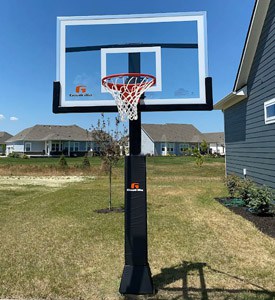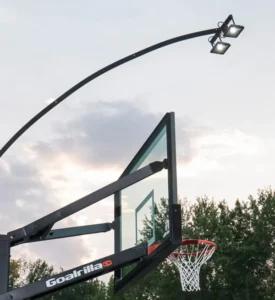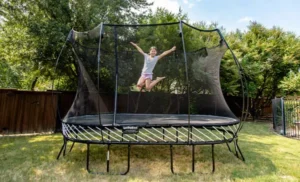Every parent tends to worry excessively about his or her child’s safety. While having a trampoline wears off built-up energy and provides excellent exercise, the average trampoline definitely has it’s fall-outs when it comes to safety. However, when Springfree designed their trampolines this was exactly what they had in mind to prevent; a lack of safety. Springfree Trampolines are designed with no springs to pinch, cut, or damage a person’s skin, a safety net to prevent falling off and/or out of the trampoline, which could cause further more extensive injury.
The safety net provides a shock resistant surface that allows a person to even run into the net without falter, which is provided with the help of Springfree’s flexible rods surrounding the outer circumference of the trampoline. Springfree has prevented over one hundred thousand trampoline accidents by creating this new technology. Parents are likely to worry the most about the accuracy of safety that Springfree’s net provides, which often leads to questions similar to “Can this trampoline be placed in-ground?” Although it is probably possible, Springfree trampolines have no need to be placed in-ground and by doing so it can actually cause more damage in the long haul than good.

When placing a trampoline or anything in the ground of such great size, extensive digging is needed to create sufficient enough space to place the entire object into the ground. When digging occurs, moisture is more readily released and will be more likely to come into contact with the frame of your trampoline. Although Springfree trampolines are designed with a coating on the frame that is three layers thick to prevent rusting, wear and tear of the frame, and peeling and flaking of the frame, placing the entire frame in a dark, cool, moist environment will unfortunately contribute to the decline of your trampoline frame’s life. Although the frame may not rust for a long period of time, one is only increasing the chance that rust could occur by placing the trampoline in a rust-friendly environment.
Springfree’s warranty states specific lengths for how long each part of the trampoline is covered. The frame of the trampoline with a basic warranty is covered for four years, and with a registered warranty it is covered double the time; eight years. So although your trampoline may not rust in this time, it is likely to occur faster and it may be too late to replace via warranty by the time this occurs, if it occurs.
Rust isn’t the only issue to consider when placing your trampoline in the ground. One of the biggest issues when placing these trampolines in the ground is the process. The process is extensive and unnecessary due to how safe the trampoline is already. Placing the trampoline in-ground can actually bring about a new host of safety issues. If installation is not performed properly and professionally, the trampoline and ground-level could have a gap that could cause jumpers to trip, twist an ankle, or worse.
The Springfree Trampoline is designed specifically to put you at ease while your children are jumping. This is precisely why there is no actual need for the trampoline to be placed in-ground. Your child is safe in the Springfree trampoline and the safety net is designed to prevent your child from falling outside and injuring himself or herself. Only about a handful of Springfree customers have ever placed their trampoline in-ground, according to Springfree professionals, so do yourself and your children a favor, and leave it above ground. You’ll be happier that you did!
















I live in an area that has very high winds. Our my neighbor’s trampoline was lifted up over their fence and smashed into another neighbor’s window. Luckily no one was hurt, but they could have been. This is why I would like to place it in the ground. Would there be a different way to do it with the spring free vs normal springs?
Hi Rachel, What’s nice about a Springfree trampoline is that it’s heavier than a typical trampoline with springs. In addition to this, we also sell Springfree ground anchors to provide extra stability, especially in high wind areas. I hope this helps!
We used anchors and ours still went flying. Thankfully it went over the neighbor’s house and the lake. I was also wondering about wind. We get 160-170 km/h winds almost every November.
Hi Shauna, Feel free to reach out to me directly at info@recunlimited.com with photos. I tried to look up your original purchase with us and didn’t find an account under your name or email address. I look forward to hearing from you soon!
Alicia